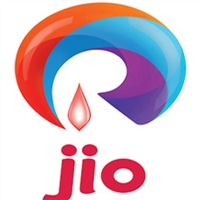Reliance Jio 4G launch – A new telecom war is set to begin.

A new era of telecom is set to begin with launch of Reliance Jio Infocomm, 4G mobile services owned by Mukesh Ambani, India’s richest man and the promoter of Reliance Industries. The launch will trigger some irrational competition but all operators are waiting for the first move. The Jio, expected to be launched in December 2015, is likely to offer deep discounts to woo customers. The company is firming up plans to launch 4G services — faster, more efficient than 3G — at Rs 300-500 a month — half or less than what a similar service costs in today’s market — on devices priced as low as Rs 4,000, according to industry chatter. Going after Jio with similar discounts will dilute profitability margins.
Jio’s main competitors Bharti Airtel, Vodafone India and Idea Cellular are actually pressing ahead aggressively with their own plans. Industry leader Bharti Airtel, which bet on 4G along with Reliance Jio in 2010, has already started offering 4G at 3G prices to upgrade as many users as it can to 4G before Jio starts. A year ago, Reliance Communications (RCom), owned by Mukesh’s brother Anil, launched 3G services at 2G rates.
But industry insiders say these announcements are nothing but gimmicks to let customers know they are in the game. The existing players are actually selectively deploying 4G networks. Uniform high-speed internet connectivity across the country on 4G technology, in any case, will take at least two years. Until then, 3G will remain the mainstay of Indian telecom.
Bharti Airtel, industry officials say, is a little more serious than Idea or Vodafone on 4G. Bharti was the first company off the block by launching 4G services nearly three years ago, with sporadic launches in a few cities, though with little success in terms of snapping up customers. Number two Vodafone India, during its recent earnings announcement, spoke for the first time about launching 4G services in some telecom zones in the second half of the year. It, however, said most of the growth in the medium term will come from 3G.
Idea Cellular also plans to spend Rs 1,000 crore to launch 4G services towards the end of 2015. But until recently, the company had maintained that its business is all about voice and still growth is to be found amid new customers. On the ground too, its focus remains unchanged. RCom, the fourth operator by number of subscribers, has also spoken of its intent to launch 4G from Gujarat as early as in November this year.
Most of the mobile service providers feel it to be very early to conclude whether Jio’s launch will unleash a price war, or quality war, or simply act as a catalyst for companies to improve service, no matter the technology. “So, it’s wait and watch.” But history does point to a bruising tariff war. Reliance Industries initially entered telecom in 2002 by buying mobile handsets and disbursing them for a down payment of Rs 500 each with a bundled plan.
In all likelihood, Jio will be just disruptive with its pricing in its second coming. It plans to target a million customers a day for the first 100 days, and is confident that handsets supporting 4G priced below Rs 4,000 — sourced from handset makers such as Samsung, ZTE, Huawei — will be ready by December. It has also asked vendors to be ready with a 100 million devices, including Wi-Fi devices, cellphones and tablets, across price ranges, but mainly at the lower end, apart from around 10 million dongles at Rs 2,000 a piece.
But affordability alone might not suffice. Jio would need to factor India’s telecom landscape — over 100% penetration in urban areas and around 50% in rural areas. Jio could face difficulties replicating the success of Reliance Infocomm. In 2002, Reliance slashed call rates to half which began a boom that played an important role in shaping today’s telecom market. But mobile penetration levels back then were modest. That is not the case anymore. An investment of Rs 70,000 crore with no returns for five years could upset Jio’s disruptive plans. The two executives of incumbents quoted in the beginning of the article also said while Jio may make an initial splash, its ability to sustain a low-price strategy is under question. Moreover, if prices of 4G devices fall, so will those of 3G devices, augmenting the adoption of 3G technologies.
That said, 4G adoptions in India will eventually be far faster than 3G, mirroring global adoption patterns. The prices of 4G devices will fall faster than anyone has envisaged, even without Jio acting as a catalyst, says the executive who commented on Jio’s beta launch. A device below Rs 6,000 is the inflection point for faster 4G adoption. Currently there is one device that supports 4G around Rs 5,000 with the rest over Rs 7,000. That, needless to say, isn’t an unbridgeable gap.
In mobile telephony, 2G is the most efficient technology for voice calls. GSM technology involves splitting each second into millisecond slices and distributing time among all callers connected to the mobile tower (signal emitting station) at that time. However, for internet connectivity, which requires data packets to be delivered, is not very efficient. The evolution to 3G, which came in tandem with operators using internet protocol, changed that. This technology breaks all information into packets, sends it over telecom cables and unpacks them at the other end.
4G is a technology meant for data, mostly video, which requires a consistently higher bandwidth to run smoothly. The latest technology allows lesser space for the same amount of information making it more suitable for streaming videos. Simply put, 3G supports data downloads at around five times faster speeds than 2G. 4G is expected to be around 10 times faster than 3G. In coming days, market is set to see a competition of 4G among all cellular operators and situation will be similar like planting a flag and adding numbers in 4G covered areas.

 Currency Convertor
Currency Convertor Post an article
Post an article Elive Today.
Elive Today.
 sending...
sending...




